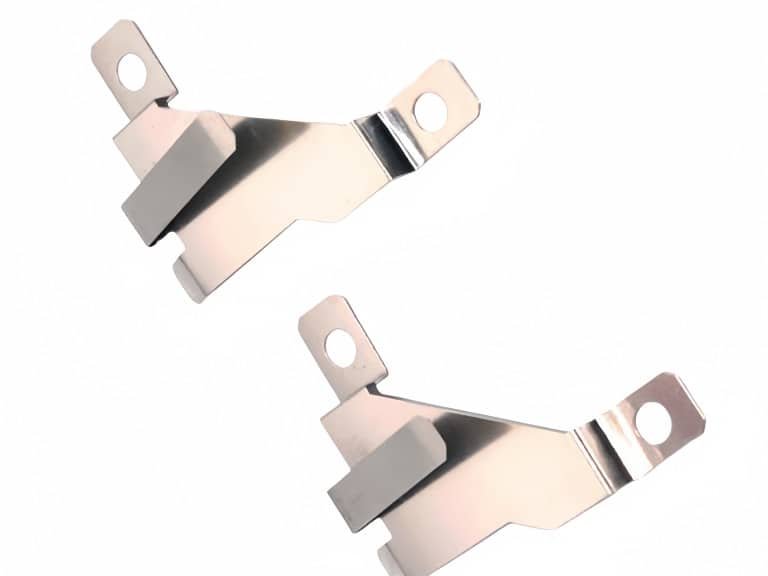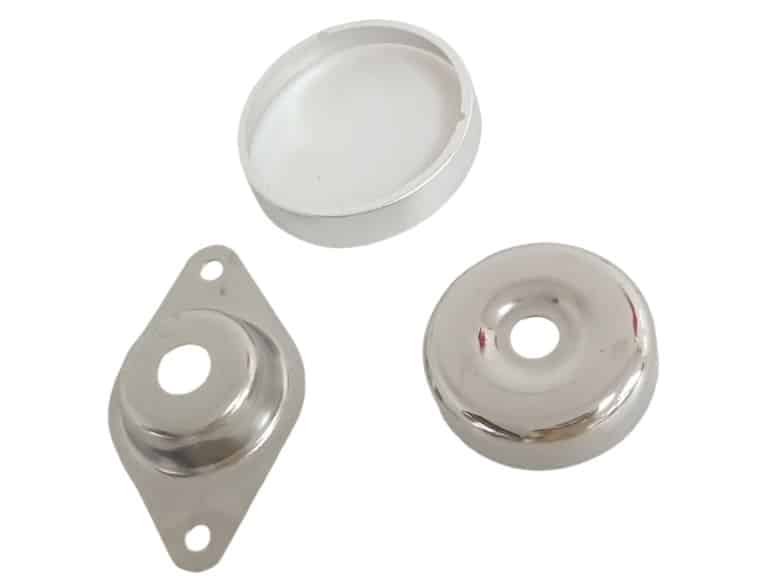The tolerances for precision metal stamping typically range from ±0.005 to ±0.010 inches, but by optimizing material selection, tool design, and processing techniques, higher precision can be achieved, even reaching ±0.0005 inches or tighter. This ultra-high precision is particularly important in fields like medical devices and micro-components, and it is a critical requirement in high-demand industries such as aerospace, where even minor errors can pose safety risks.
This article delves deeply into the standard tolerance ranges for precision metal stamping, the key factors influencing precision, and the best practices for improving it. By mastering these points, you can not only enhance product reliability but also optimize manufacturing costs and production efficiency, providing greater competitive advantages for your projects. Whether addressing complex design needs or meeting stringent industry standards, understanding and applying these optimization strategies will be key to success.
Table of Contents
What is Precision Metal Stamping Tolerance?
At Yonglihao Machinery, we deeply understand that precision metal stamping tolerances are key to ensuring parts match specifications precisely and operate reliably. Tolerances define the allowable fluctuation range for part dimensions, ensuring perfect fit between components and smooth operation, while achieving uniformity in mass production. According to international standards like ISO 2768, tolerance management runs through every link from design to production, and any oversight can amplify errors, leading to product failure. Precision tolerances not only reduce assembly issues but also improve system efficiency. For example, in stamping pacemaker housings, we control tolerances to ±0.001 inches, ensuring device sealing and durability while reducing failure rates by about 20%.
The standard tolerance ranges in metal stamping vary based on material thickness, part design complexity, and forming features. Typically, tolerances for single-surface features are ±0.005 inches, and for multi-surface features, ±0.030 inches, while ultra-thin materials or special processes can achieve ±0.0005 inches or even higher precision. Precision tolerances are especially vital in high-demand industries like aerospace and medical devices, helping to reduce vibration interference and extend system lifespan. By mastering these benchmarks, companies can better assess project needs, optimize designs, select appropriate tools and materials, thereby achieving higher precision and efficiency while lowering manufacturing costs and scrap rates.
The following table outlines typical tolerance types:
| Tolerance Type | Standard Range | Precision Range |
|---|---|---|
| Single-Surface Feature | ±0.005 inches | ±0.001 inches |
| Multi-Surface Feature | ±0.030 inches | ±0.005 inches |
| Angular Tolerance | ±0.5° | ±0.1° |
Material Properties Affecting Metal Stamping Tolerances
Material properties are the core determinants of tolerance levels in stamping operations. At Yonglihao Machinery, we are well aware of the unique advantages and challenges each material brings. Proper material selection can effectively balance precision requirements with cost-effectiveness. Variations in material thickness or hardness can amplify tolerance deviations, leading to production instability. Additionally, material types affect the force required for processing, where thicker materials may need greater pressure, introducing more variability. Understanding these properties helps anticipate risks during the design phase.
Ductility and Formability: Materials with high ductility and formability (such as aluminum, copper, and certain stainless steels) are easier to shape without breaking, supporting finer tolerance control. These materials can tighten tolerances to ±0.002 inches. Ductility allows uniform material flow under high pressure, avoiding localized stress concentrations that cause deformation.
Tensile Strength and Material Hardness: High-strength materials resist stress deformation but require higher pressure during stamping to maintain dimensional accuracy. Tensile strength and hardness directly impact stamping precision. Excessive hardness may accelerate tool wear, indirectly affecting consistency.
Grain Direction and Material Thickness: Grain direction influences material flow during stamping, affecting part strength and appearance. Uniform material thickness is crucial for consistent tolerances in batches. Uneven thickness can cause deviations up to 0.01 inches, while thinner materials are better suited for stringent tolerances (e.g., ±0.0005 inches), especially in micro-applications. Standard thickness ranges include 0.5-3mm for steel and 0.2-6mm for aluminum, directly influencing force application and deformation control.
| Material | Ductility | Tensile Strength |
|---|---|---|
| Aluminum | High | Medium |
| Stainless Steel | Medium | High |
| Copper | High | Medium |
By evaluating these properties, we recommend ideal materials for stamping projects, ensuring a balance between tolerances and performance.
Further Reading: 10 Common Materials Used in Precision Metal Stamping Processes

Stamping Process Parameters Affecting Tolerances
Precision metal stamping requires precise calibration of multiple process parameters to ensure strict tolerance control.
Press Speed and Force: Excessive press speed can lead to heat buildup, causing warping or deformation; insufficient force may result in incomplete forming. By optimizing speed and force, we maintain tolerance consistency in high-speed production while reducing defect rates. Real-time monitoring of these parameters helps improve efficiency and precision.
Die Design and Tooling Precision: High-quality dies form the foundation for achieving precision tolerances. We optimize die designs using CAD to ensure high accuracy and consistency in parts. For instance, precision dies can reduce tolerances to ±0.001 inches, long-term lowering scrap rates and enhancing economic benefits.
Lubrication and Cooling: Lubrication reduces friction and extends tool life, while cooling controls temperature to inhibit thermal expansion and contraction, ensuring tolerance stability. In medical component production, optimizing cooling systems effectively avoids temperature fluctuations, improving precision for critical parts.
Environmental Factors in Precision Metal Stamping
Environmental factors, though often overlooked, have a significant impact on dimensional accuracy. At Yonglihao Machinery, we ensure stability in high-precision stamping services through rigorous environmental controls.
Temperature and Humidity Control: Changes in temperature and humidity can cause material expansion or contraction, interfering with tolerance precision. We prevent thermal effects through constant temperature control and maintain humidity at 40-60% to reduce lubrication failure and material corrosion risks. In high-temperature conditions, additional cooling systems stabilize tolerances and prevent tool thermal expansion from affecting die precision. Optimizing environmental conditions can significantly reduce tolerance variations and enhance production reliability.
Workspace Cleanliness and Maintenance: A clean work environment effectively reduces contamination risks, preventing particles from damaging die surfaces or interfering with stamping precision. We ensure production consistency through regular cleaning and equipment maintenance. In aerospace projects, strict cleaning standards have reduced contamination failures, significantly boosting production efficiency. Additionally, equipment calibration and wear management are key to maintaining precision, and clean operations compliant with industry standards can further lower scrap rates.
Best Practices for Achieving Tight Tolerances
Achieving high-precision tolerances requires full-chain optimization from design to quality control. At Yonglihao Machinery, we ensure team execution and service quality through refined processes and operator skills training. These practices not only achieve tight tolerances but also effectively control costs, providing reliable solutions for clients.
Design Considerations for Optimizing Tolerances
Design decisions are critical for achieving tight tolerances. By simplifying geometric features and optimizing bend radii, we can effectively reduce deformation risks and ensure parts meet requirements. Collaborating with clients to improve designs, balancing functionality and manufacturability, is our consistent approach.
- Simplify Geometry: Reduce complex features to minimize deformation risks.
- Bend Radius: Design at least 1.5 times the material thickness to avoid cracks.
- Complexity Assessment: Complex parts require additional tolerance optimization, with early evaluation being particularly important.
Additionally, using simulation tools in the design phase can predict tolerance stacking issues, optimizing the overall scheme for greater efficiency and reliability.
Quality Control and Inspection Methods
Efficient quality control methods are the core of maintaining tight tolerances. We use CMM (Coordinate Measuring Machines) and optical systems for precise verification, ensuring compliance at every production stage. The quality control process covers first-article inspection, in-process checks, and final inspections to prevent issues.
- CMM Precision: Achievable to 0.0005 inches, suitable for high-precision projects.
- Non-Destructive Testing: Ensures batch consistency while controlling costs.
These methods not only improve product quality but also reduce rework and scrap rates, delivering higher value to clients.
Further Reading:How to Ensure Quality Control in Metal Stamping?
Implementation of Statistical Process Control (SPC)
Statistical Process Control (SPC) is an effective tool for monitoring production stability and early trend identification. Through data analysis, we continuously optimize processes to achieve tighter tolerances while maintaining production efficiency.
- Real-Time Monitoring: Use tools like control charts for timely parameter adjustments.
- Data-Driven Optimization: SPC analysis can reduce variations in batch production by 15%.
- AI Integration: Combining artificial intelligence analysis enhances prediction accuracy, supporting long-term optimization.
Operator professional training is key to SPC success, ensuring every step serves the tight tolerance goals. Through these practices, we not only achieve higher precision but also provide clients with more competitive solutions.
Mastering Precision in Metal Stamping
As a prototyping service provider at Yonglihao Machinery, we deeply understand the importance of material properties, process parameters, environmental controls, and quality management in achieving tight tolerances. Whether for high-demand components in automotive, aerospace, or medical industries, we meet your needs with excellent technology.
From material selection to process control, we pursue perfection in every detail.By partnering with reputable stamping companies like Yonglihao Machinery, you gain not only industry-leading technical support but also systematic solutions, ensuring every product meets strict tolerance requirements. We help clients understand key factors affecting precision, assisting you in making smarter choices in design and manufacturing.
If you are looking for reliable stamping companies, Yonglihao Machinery is your trusted partner. Contact us now for a customized quote!
FAQ
What Factors Affect Tolerances?
Tolerances are primarily influenced by material properties, process parameters, and environmental conditions. By optimizing these factors, we can achieve optimal precision. For example, using high-ductility materials can improve accuracy by 20%. Additionally, operator skills and material consistency are key to ensuring stable tolerances.
How Do Material Properties Affect Metal Stamping Tolerances?
Material properties such as ductility, formability, tensile strength, and hardness directly impact stamping tolerances. Selecting the right materials is the foundation for ensuring performance. For instance, high-strength materials require additional process adjustments to maintain precision, while high-ductility materials are easier to achieve tighter tolerances.
What is the Significance of Die Design in Achieving Tight Tolerances?
Die design and tooling precision are the core of achieving tight tolerances. High-precision die design ensures accuracy in the stamping process. We create high-quality dies using advanced design and manufacturing techniques to meet stringent tolerance requirements.
How Does Temperature Control Affect Precision Metal Stamping?
Temperature and humidity control are crucial in precision stamping. Environmental fluctuations can cause material expansion or contraction, affecting precision by up to 0.01 inches. We ensure material and process stability by maintaining a constant temperature and humidity environment.
What Quality Control Methods Are Used to Ensure Tight Tolerances?
We employ comprehensive quality control methods, including Statistical Process Control (SPC) and high-precision tools like CMM for verification. These methods ensure products meet tolerance requirements while maintaining consistency and reliability.
What Are the Benefits of Achieving Tight Tolerances in Metal Stamping?
Achieving tight tolerances not only enhances product quality but also reduces waste, improves production efficiency, and lowers costs. Through process optimization, we deliver high-precision, high-performance products to clients, helping them stand out in competition.

